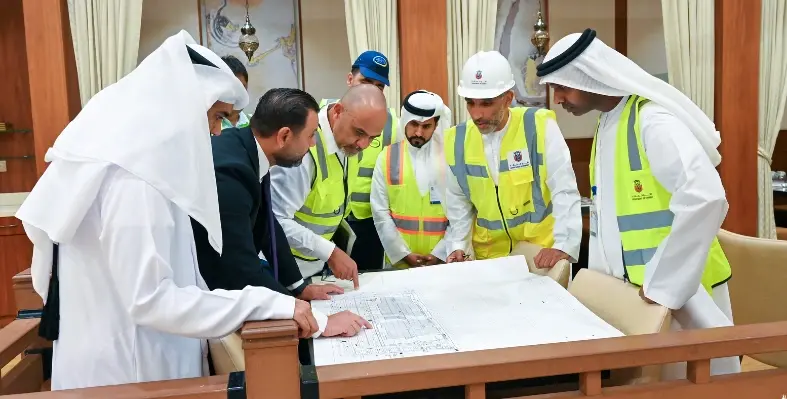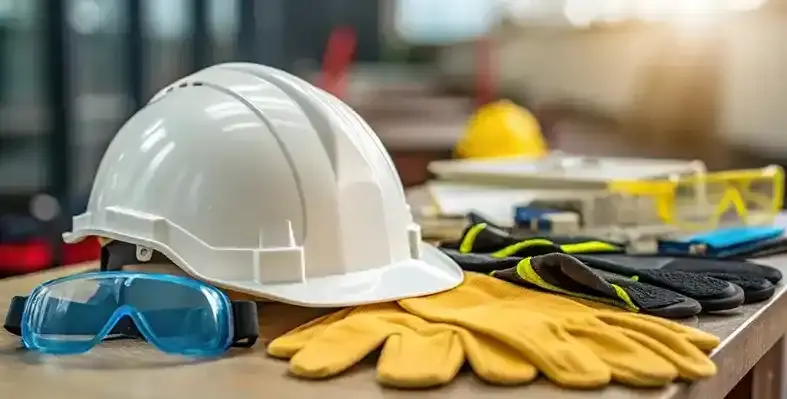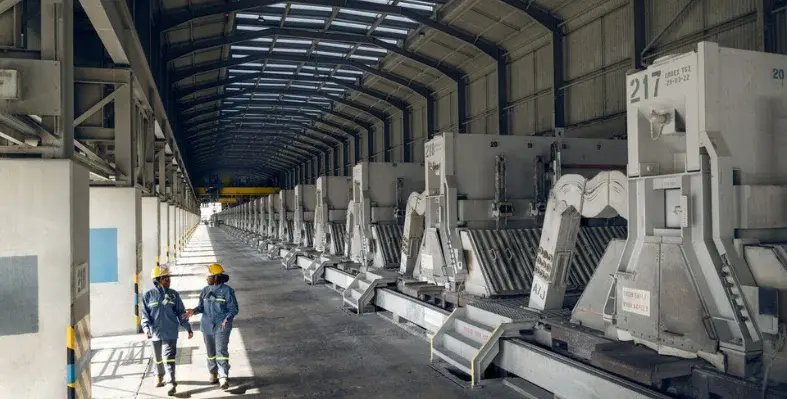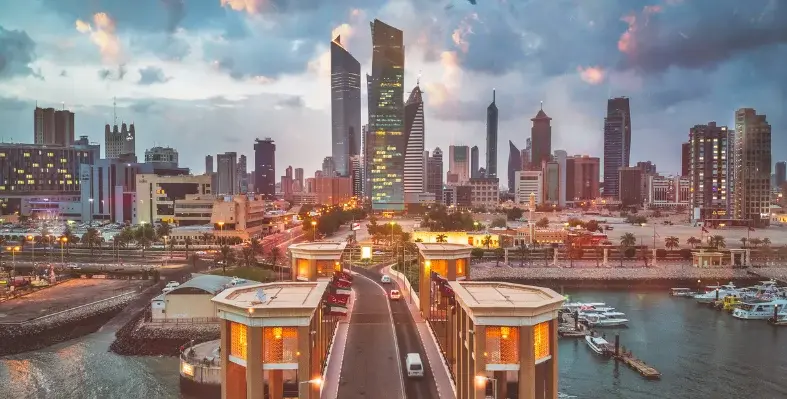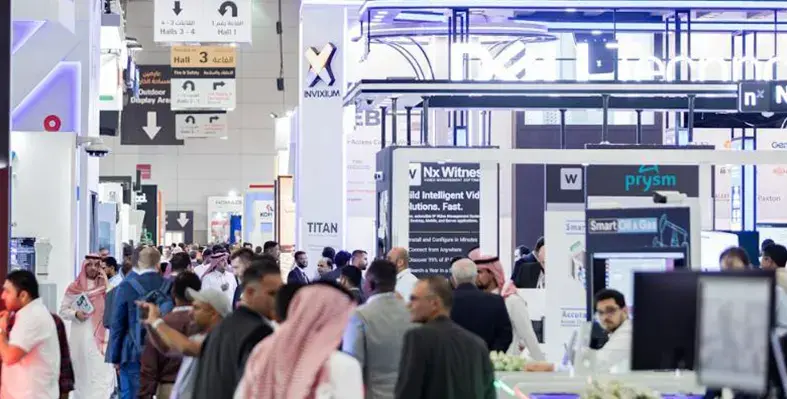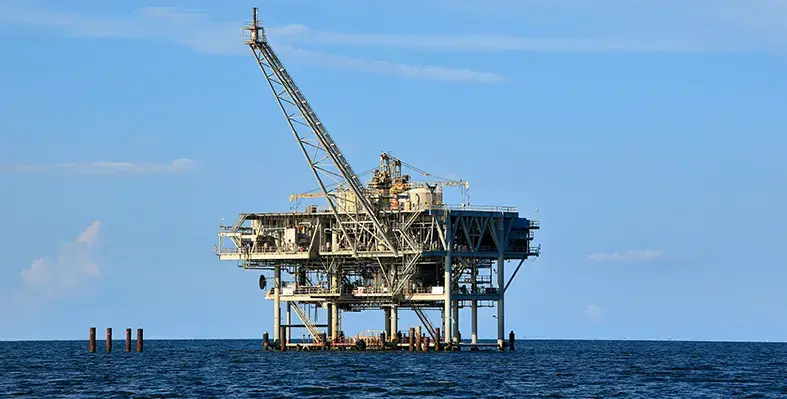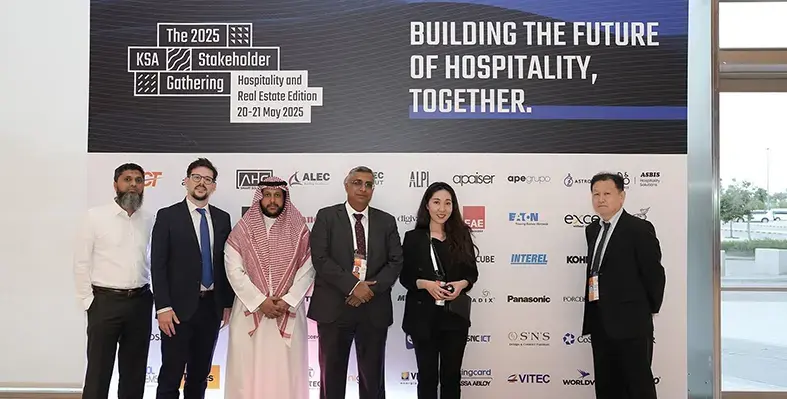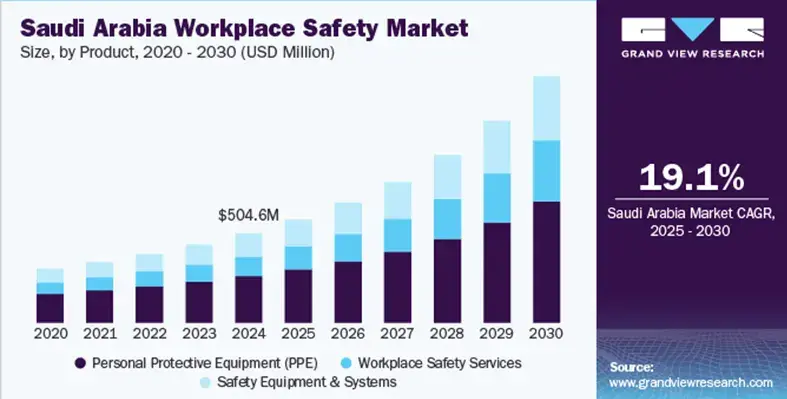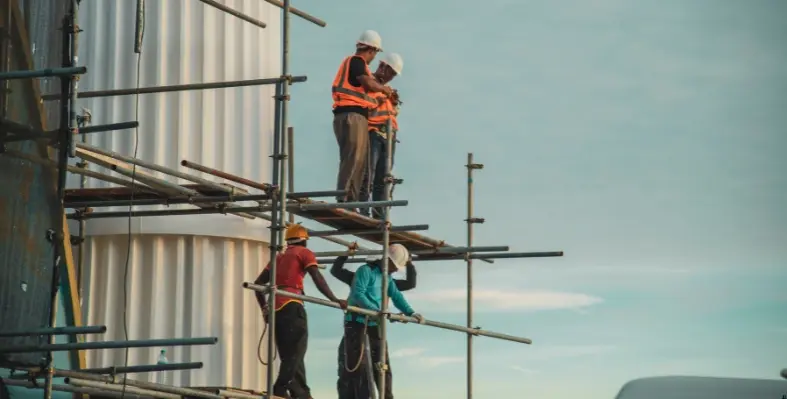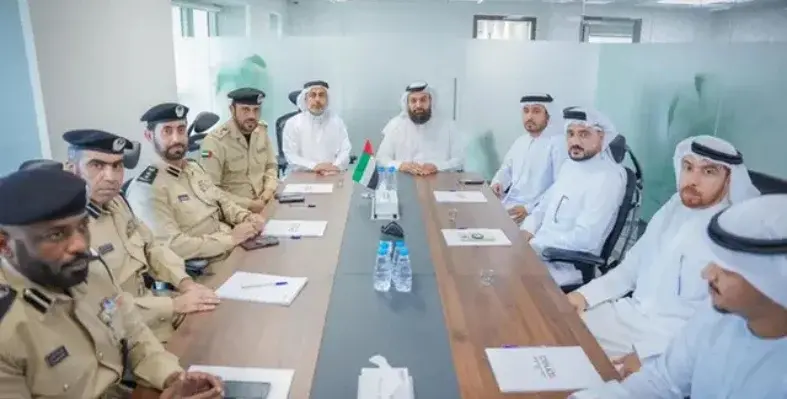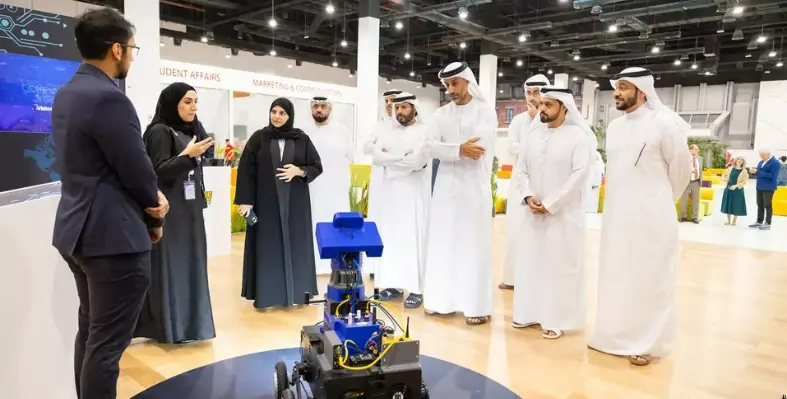Regional Coverage
Regional Coverage
- Details
- Sania Aziz
- Middle East
- Date: 4 June, 2025
- Year: 2025
The Abu Dhabi Department of Energy (DoE) has successfully completed its Gas Systems Remediation Project with a 100% completion rate, recording more than 200,000 safe working hours since the programme began in August 2023.
The initiative is part of Abu Dhabi’s broader efforts to enhance the safety of gas systems across the Emirate.
Dr. Saif Saeed Al Qubaisi, Acting Director General of Regulatory Affairs at the DoE, said, “Safety is a collective effort and a shared responsibility among all stakeholders in this sector. Building owners play a vital role in maintaining the safety and security of the community. We began our inspection and remediation project in August 2023 and have successfully inspected over 3,100 buildings across the Emirate.”
The DoE confirmed that over 2,400 buildings were remediated, including more than 200 high-risk properties addressed as a priority. The project also identified and repaired 550 previously undetected gas leaks, relocated all gas filling lines outside buildings, replaced more than 450 gas tanks and control panels, and installed over 10,000 gas leak detectors in kitchens.
Dr. Al Qubaisi added, “I would like to express my gratitude to the building owners in Abu Dhabi for their significant efforts and cooperation, which enabled us to focus our efforts on achieving a safer, more stable, and more sustainable energy sector for the Emirate.”
Eng Ahmed Alsheebani, Executive Director of the Petroleum Products Regulatory Affairs Sector at DoE, said, “Abu Dhabi continues to lead in ensuring the safe use of gas systems, recognizing gas as a vital resource that impacts various aspects of daily life and plays a key role—alongside clean and renewable energy sources—in supporting the stability of the energy sector. I urge all Abu Dhabi residents to remain vigilant when dealing with gas; through collective efforts, we will continue to build a safer and more sustainable community.”
Alsheebani also acknowledged the support of key government entities, including the Department of Economic Development (DED), Abu Dhabi Agriculture and Food Safety Authority (ADAFSA), Department of Municipalities and Transport (DMT), Abu Dhabi Police, the Civil Defense Authority (ADCDA), and the Emergency, Crisis and Disaster Management Center.
Under current regulations, property owners must sign annual maintenance contracts with licensed gas operators and undergo regular third-party inspections approved by the DoE. Additionally, they must obtain a No Objection Certificate (NOC) confirming system safety—required to receive the ISTIFAA safety compliance certificate from Abu Dhabi Civil Defense Authority.
- Details
- Louise Waters
- Middle East
- Region: Middle East
- Date: 3 June 2025
- Year: 2025
A recent report by Grand View Research on the Saudi Arabia workplace safety market highlights a number of growth areas, with the market forecast to increase by a CAGR of 19.1% from 2025 to 2030
The personal protective equipment (PPE) segment accounted for a revenue share of over 51.0% of the workplace safety market in 2024, according to the report, and is set to grow further. The construction boom in Saudi Arabia, driven by Vision 2030 giga-projects such as NEOM, Red Sea Project, and Qiddiya, is boosting the demand for helmets, gloves, harnesses, and high-visibility clothing to protect workers from falls, dropped objects and falling debris, and accidents. While demand is high in the buoyant oil and gas sector for flame-resistant (FR) suits, respirators, and protective eyewear to protect workers from fires, toxic gases, and chemicals, with high-quality PPE mandated by Aramco and government regulations.
Also forecast to grow strongly is the workplace safety services segment, as Saudi companies invest in comprehensive training programmes, behaviour-based safety initiatives, and thorough incident investigations to foster a proactive safety culture. Rising insurance costs and legal liabilities are accelerating the demand for professional safety consulting, risk assessments and compliance solutions.
With smart safety solutions in construction and industrial zones mandated under Vision 2030 and Saudi OSH regulations, demand is growing for wearable IoT devices such as smart helmets and vests that monitor worker vital signs and environmental hazards, ensuring real-time alerts for health and safety risks. In high-risk sectors like oil and gas and mining, IoT-enabled gas/chemical sensors can detect leaks instantly, preventing explosions and harmful exposures and sending alerts to control centres. With 5G and AI integration, IoT safety systems are facilitating predictive risk management, driving rapid market growth as industries prioritise data-driven, proactive safety measures.
Another growth area highlighted is the VR sector. VR in safety training effectively simulates real-world scenarios, enabling employees to practice addressing workplace hazards in a safe, controlled setting. This immersive experience increases engagement, making learning more interactive and memorable and leading to quicker response times in actual situations, thereby helping to reduce workplace accidents and enhance overall safety performance.
- Details
- Matthew Hayhoe
- Middle East
- Topic: PPE
- Date: 02nd May
- Year: 2025
Emirates Global Aluminium (EGA)'s annual 'Beat the Heat' programme has introduced wearable tech for workers that enhances location services, connectivity and real-time data to reduce the risk of heat-related illness
The industrial firm has recorded no cases of heat-related illnesses since 2021, yet continues its annual 'Beat the Heat' programme. CEO Abdulnasser Bin Kalban said the programme strives "to engage everyone in ensuring we have zero cases of heat-related illness at our company, and together we have a long track record of success.
"Technology has the potential to make our Beat the Heat programme even more effective."
The wearable tech deployment was joined by new full-body cooling units at EGA medical centres and operational areas at several plants across Jebel Ali and Al Taweelah.
2024 was the third consecutive summer of no recorded heat-related illnesses, with the last two incidents recovering within hours of treatment in summer 2021.
- Details
- Matthew Hayhoe
- Middle East
- Topic: HSE
- Region: Middle East
- Date: May 2025
- Year: 2025
Kuwait's Minister of Oil, Tariq Sulaiman Al-Roumi, reiterated the state's support for the sustainability of the oil market's balance and security
During three virtual events (the OPEC Ministerial Conference, the OPEC + Joint Ministerial Montioring Committee, and the OPEC + Ministerial Meeting), the Minister emphasised the importance of the "enhanced joint coordination among countries within the framework of the OPEC+ Declaration of Cooperation and the adoption of well-considered decisions that support the stability of global oil markets."
Al-Roumi highlighted Kuwait's policy and market support in a press statement from the Ministry of Oil.
The Minister of Oil was joined by Kuwait's governor to OPEC, Mohammad Khudr Al-Shatti, and national representative to OPEC, Sheikh Abdullah Sabah Salem Al-Hamoud Al-Sabah.
- Details
- Sania Aziz
- Middle East
- Date: 29 May, 2025
- Year: 2025
Intersec Saudi Arabia, the Kingdom’s leading platform for security, safety, and fire protection, is set to return to the Riyadh International Convention and Exhibition Centre (RICEC) from 30 September to 2 October this year.
The event will bring together government authorities, industry leaders, and international solution providers to address the evolving needs of Saudi Arabia’s transformative giga-projects and global ambitions.
Organised by 1st Arabia and licensed by Messe Frankfurt, Intersec Saudi Arabia will operate under the theme “Securing progress, igniting safety: Unveiling tomorrow’s solutions for Saudi Arabia.”
The event aligns global innovation with the Kingdom’s national priorities, fostering collaboration to secure the infrastructure, environments, and communities driving Saudi Arabia’s prosperous future.
Saudi Arabia is undergoing a monumental transformation with projects like Neom, Qiddiya, and Red Sea Global, alongside preparations for major global events such as Expo 2030 and the 2034 FIFA World Cup.
These developments position the Kingdom as a key player in global tourism, sports, and industry. Intersec Saudi Arabia serves as a critical platform for stakeholders to ensure the safety and security of these ambitious initiatives.
“Intersec Saudi Arabia provides an important platform for decision makers across Saudi Arabia’s major projects to connect with global innovators and work together to build a secure, future-ready environment,” said Bilal Al Barmawi, CEO and founder of 1st Arabia Trade Shows & Conferences.
“We look forward to facilitating important business connections that support the country’s growth and long-term success.”
Key themes
The event is divided into five product sectors: Commercial & Perimeter Security, Homeland Security & Policing, Fire & Rescue, Safety & Health, and Cybersecurity.
Intersec Saudi Arabia will also host CPD-certified content theaters, including the Future Security and Safety Summit Powered by ASIS and the Fire Protection & Technology Summit. New additions include a Thought Leadership Pavilion and the return of The Premium Club, offering exclusive benefits for select buyers and influencers.
The Future Security and Safety Summit will feature high-level discussions on emerging global threats, crisis response strategies, and responsible AI innovation. Speakers will include representatives from FIFA, Red Sea Global, Diriyah Company, Kearney, and Saudi Aramco, among others.
Meanwhile, the Fire Protection and Technology Summit will bring together fire and emergency service leaders to discuss challenges, standards, and technologies, with insights from Saudi Civil Defense, International Maritime Industries, and AESG.
“The conference and events element of Intersec Saudi Arabia continues to grow each year and will once again bring together the brightest minds in security, safety and fire protection from around the world,” said Riham Sedik, exhibition director, Intersec Saudi Arabia, Messe Frankfurt Middle East.
“The event will offer interactive showcases, live demonstrations and engaging panel discussions, all tailored to the unique needs of the Kingdom.”
- Details
- Louise Waters
- North America
- Topic: HSE
- Region: North America
- Date: 28 May 2025
- Year: 2025
The USA’s Center for Offshore Safety (COS) has awarded a Safety and Environmental Management System (SEMS) Certificate to HWCG Holdings, LLC, a consortium of deepwater operators and non-operators formed to provide a rapid and comprehensive response to subsea well containment events
The award recognises the organisation’s successful completion of an independent audit and verification of its Safety and Environmental Management System (SEMS) by a CICS Americas, a COS-accredited Audit Service Provider (ASP).
SEMS Certificates are awarded to organisations that not only undergo an independent SEMS audit by a COS-accredited ASP but also implement all improvement actions identified during the audit process — actions that support a culture of continual improvement.
“The achievement is particularly impressive in that HWCG voluntarily chose to have their SEMS independently audited as part of their commitment to protect people, property, and the environment,” said Russell Holmes, COS senior director. “Under US regulations, only oil and gas operators are required to have their SEMS audited by a COS-accredited ASP.”
“By HWCG voluntarily achieving this SEMS Certificate, it reflects our dedication to protecting people, the environment, and the communities we support- it also demonstrates our unwavering commitment in response preparedness to our members and response providers,” commented HWGG.
HWCG is made up of a diverse and experienced group of deepwater operators and non-operators, representing two-thirds of the deepwater operators in the Gulf of America. Each HWCG member is committed to a robust, integrated, standardised and sustainable response solution to a deepwater blowout in the US Gulf of America. Each member company provides expertise and resources that collectively help achieve HWCG’s ultimate goal of rapid intervention, response and containment.
HWCG is the only source control and containment consortium and first not-for-profit to voluntarily earn a SEMS Certificate.
- Details
- Sania Aziz
- Middle East
- Date: 26 May, 2025
- Year: 2025
Panasonic Electric Works Middle East & Africa (PEWMEA) recently participated in the 2025 KSA Stakeholder Gathering, held in Riyadh.
The company presented its advanced fire alarm systems at the event, which included a comprehensive suite of intelligent fire detection and early warning systems.
Among the innovations displayed were Panasonic’s EBL512 G3 and EBLOne systems.
The EBL512 G3 is the company’s third-generation intelligent addressable fire alarm system, offering robust capabilities including four COM loops and support for up to 1,012 addresses.
Its AI-driven detection allows each sensor to adapt independently to its environment, ensuring swift and accurate responses to fire threats even in high-risk or sensitive settings.
Meanwhile, the EBLOne control unit caters to the needs of small- and medium-sized facilities, featuring remote monitoring capabilities and seamless integration with building management systems via an optional gateway.
Panasonic also demonstrated its detectors equipped with artificial intelligence and a unique learning function.
Other features
These devices constantly analyse environmental conditions and automatically select the most suitable VdS-approved algorithm, enhancing detection accuracy while filtering out short-term disturbances.
Another innovation showcased was the fully integrated addressable emergency and adaptive exit lighting system.
Connected to the same loop as the fire alarm system, these luminaires allow for individual control and real-time monitoring.
The adaptive lights dynamically guide building occupants away from hazardous areas during evacuations and are powered by 24V for simplified and cost-efficient installation.
Finally, the company unveiled a multifunctional display unit with a redundant connection to the central control panel.
This unit supports a range of functionalities including smoke control, fire brigade interface, and repeater panel use, further reinforcing Panasonic’s comprehensive approach to smart safety infrastructure.
"Saudi Arabia’s hospitality industry is experiencing unprecedented growth, fuelled by ambitious government initiatives and substantial infrastructure investments. With positive prospects predicted for the local market, it is paramount that businesses enhance their fire safety strategies to rapidly scale and gain competitive advantage," stated Eiji Ito, managing director, PEWMEA. "Panasonic, backed by over 40 years of Japanese innovation and high-quality craftsmanship in AI-powered fire detection, is ideally positioned to support the Kingdom’s vision for socio-economic transformation. Our complete, reliable and easily scalable systems are backed by a global track record and strong R&D commitment focused on developing technologies suited to the specific needs of our local customers.”
Sudesh Unni, sales director at PEWMEA, emphasised the brand’s legacy of quality and innovation. "Panasonic has a deep-rooted history of delivering exceptional products and solutions adhering to the highest quality standards. Our range of smart fire alarm systems ensures effective and reliable performance that meets the stringent demands of the hospitality industry. Panasonic's dedication to providing innovative solutions not only supports businesses in achieving operational excellence and sustainability, but also contributes to the overall advancement and evolution of the industry."
- Details
- Louise Waters
- Middle East
- Topic: HSE
- Region: Middle East
- Date: 23 May 2025
- Year: 2025
A new report from Grand View Research on Saudi Arabia Workplace Safety Market Size, Share & Trends Analysis estimates the Saudi Arabia workplace safety market at US$504.6mn in 2024 and forecasts that it will grow at a CAGR of 19.1% from 2025 to 2030
The growing awareness of the importance of ensuring a safe working environment has boosted the demand for safety solutions, including personal protective equipment (PPE), safety management systems, and employee training, with more comprehensive safety measures and protocols being put in place.
The Kingdom’s Vision 2030 plan is driving this growth, according to the report, with its focus on industrial diversification, infrastructure development and quality of life. The expansion of mega-projects like NEOM, the Red Sea Project, and Qiddiya has boosted the demand for advanced safety equipment, training, and digital safety platforms to protect workers in high-risk environments.
The rising awareness among employers of the economic and reputational risks associated with workplace accidents has resulted in more proactive safety management strategies rather than reactive responses, the report notes. Here, the growing adoption of digital technologies are playing an increasing role, with IoT-based sensors allowing real-time monitoring of hazardous conditions, while AI-powered analytics can predict potential risks. Real-time incident reporting systems enable quicker corrective actions and compliance tracking, thereby helping to reduce injuries and fatalities. Digital technologies also improve operational efficiency and productivity by minimising downtime, streamlining audits, and ensuring continuous improvement in workplace safety practices.
Stricter regulations from government entities like the Ministry of Human Resources and Social Development are requiring companies to enhance their focus on occupational health and safety (OHS) compliance. These rules mandate rigorous safety practices, regular inspections, and adherence to international standards. As a result, there is increased investment in safety training, protective equipment, and digital monitoring tools. An example is the establishment in February 2025 of Red Sea Global’s (RSG), first Health & Safety Training Academy at the AMAALA luxury wellness destination, which offers free training to RSG's workforce, partners, and contractors, focusing on essential construction skills and safety practices.
Workplace safety requirements are particularly stringent in the energy sector, with Saudi Aramco's Safety Management System (SMS) enforcing rigorous standards for contractors. Saudi OSH laws and ECRA (Energy Compliance Regulations) also require real-time safety monitoring in utilities like power plants and desalination facilities, which is driving the adoption of advanced safety systems such as IoT sensors, automated alerts, and digital compliance tracking to prevent accidents and ensure worker safety.
Find our more here.
- Details
- Sania Aziz
- North America
- Topic: HSE
- Region: North America
- Date: 22 May, 2025
- Year: 2025
The U.S. Department of Labor’s Occupational Safety and Health Administration (OSHA) hosted its 12th annual National Safety Stand-Down to Prevent Falls in Construction, rallying employers and workers nationwide to tackle the industry’s leading cause of fatalities: falls.
Held earlier this month, the event emphasised cutting-edge strategies to enhance workplace safety.
During the Stand-Down, OSHA encouraged construction firms to adopt advanced safety measures, including immersive hazard recognition training, AI-driven risk assessments, and updated toolbox talks focused on high-risk tasks like roofing, ladder use, and scaffold work.
The initiative spotlighted how technology and data analytics can transform safety protocols on modern job sites.
Deputy Secretary of Labor Keith Sonderling delivered keynote remarks at the National Institutes of Health campus in Bethesda, Maryland, where active construction projects underscored the urgency of innovative fall prevention.
OSHA promoted widespread participation by sharing a list of free, accessible events, both virtual and in-person, on its website, enabling workers and employers from construction and beyond to engage in local safety initiatives.
A cornerstone of OSHA’s Fall Prevention Campaign, the Stand-Down, developed with The Center for Construction Research and Training, aligned with Construction Safety Week’s mission to eliminate falls.
Since 2012, this initiative has trained over 10 million workers, driving a cultural shift toward proactive safety in the industry.
- Details
- Matthew Hayhoe
- Europe
- Topic: HSE
- Region: Europe
- Date: May 2025
- Year: 2025
After several industry experts, the Health and Safety Executive and MSA Safety united for a roundtable around workplace safety, the organisation has produced a follow-up whitepaper to address the stagnation in workplace accident and fatality figures
The roundtable centred around the statistic that 138 people lost their lives in workplace accidents in 2024—a figure which remains comparable to 2018/19 figures and defies ambition to reduce the risk of workplace incidents. 36% of those fatalities were due to falls from height.
Emphasising clear communication, safety education and PPE, the whitepaper identifies key improvement areas and barriers to improving workplace incident statistics and worker safety. Some of those barriers included human nature and poor equipment design.
Jason Anker, a safety advocate who suffered from a life-changing fall, was on the panel. He emphasised how a holistic safety culture must be cultivated, especially when working at height, to create meaningful improvements.
MSA Safety has published the full whitepaper and panel discussion on its site.
- Details
- Matthew Hayhoe
- Middle East
- Topic: PPE
- Region: Middle East
- Date: May 2025
- Year: 2025
The facility management firm has partnered with the Sharjah Civil Defence Authority and the Sharjah Prevention and Safety Authority to conduct a wide field study to evaluate and enhance the effectivieness of early warning systems in building and facilities
All three organisations will hope to assess and address technical faults in early warning alarm systems across Sharjah.
Initially, the organisations will identify alarms with technical malfunctions, with building owners and operators contacted regarding periodic maintenance requirements as set by the Civil Defence. The end goal of the campaign is to ensure better alarm system efficacy and reduce repair durations and response times to fire incidents.
Saned's managing director, Eng. Hamid Al Zarouni, described the importance of the Aman system, a fire safety initiative ongoing in Sharjah. "[Aman] stands as a top operational priority for us. It is considered one of the key pillars of the smart protection system implemented across buildings and facilities in Sharjah.
"Our ongoing partnership with the Sharjah Civil Defence Authority and the Sharjah Prevention and Safety Authority reflects our commitment to supporting government efforts in promoting proactive prevention practices and achieving the highest standards of safety and readiness to protect lives and property."
- Details
- Sania Aziz
- Middle East
- Date: 19 May, 2025
- Year: 2025
Last month, Dubai Municipality hosted an event at Canadian University Dubai, themed “Artificial Intelligence Trends in Shaping the Future of Occupational Health and Safety,” coinciding with the International Labour Organization’s World Day for Safety and Health at Work.
As we reflect on this three weeks later, Dubai’s pioneering use of AI in workplace safety continues to set a global benchmark, aligning with the UAE’s vision for innovation and sustainability.
The event, attended by H.E. Eng. Marwan Ahmed bin Ghalita, Acting Director General of Dubai Municipality, H.E. Khalfan Belhoul, CEO of the Dubai Future Foundation, and H.E. Buti Saeed Al Ghandi, Chancellor of Canadian University Dubai, alongside experts and academics, explored how AI is redefining workplace safety.
Discussions highlighted next-generation technologies such as predictive analytics, AI-powered wearable sensors, and automated compliance systems that enhance well-being, sustainability, and operational efficiency.
These tools are critical to preventing occupational accidents and diseases, a global priority emphasised by the ILO.
Growing use of digitalisation
Dubai Municipality showcased its digital transformation strides, including advanced robots that measure air pollutants in real time, a smart interactive map of the emirate with AI-driven geographic data for rapid alert responses, and virtual reality-based training programs for employees.
As 2025 progresses, Dubai’s April vision remains a call to action.
Global AI adoption in workplace safety is projected to grow significantly, potentially reducing incidents by 25% by 2026, per industry trends.
Dubai Municipality urges companies to integrate AI into their operations.
Its smart monitoring platforms and applications, built on a foundation of 3D printing and other innovative technologies, offer a model for scalable safety solutions that benefit organisations of all sizes.
This forward-thinking approach supports the UAE’s Vision 2031, which prioritises innovation and societal well-being. By fostering collaboration and welcoming new ideas, Dubai Municipality continues to lead the charge in creating healthier, safer work environments worldwide.
In the future, businesses are encouraged to adopt AI-driven tools and partner with local authorities to align with Dubai’s standards.
